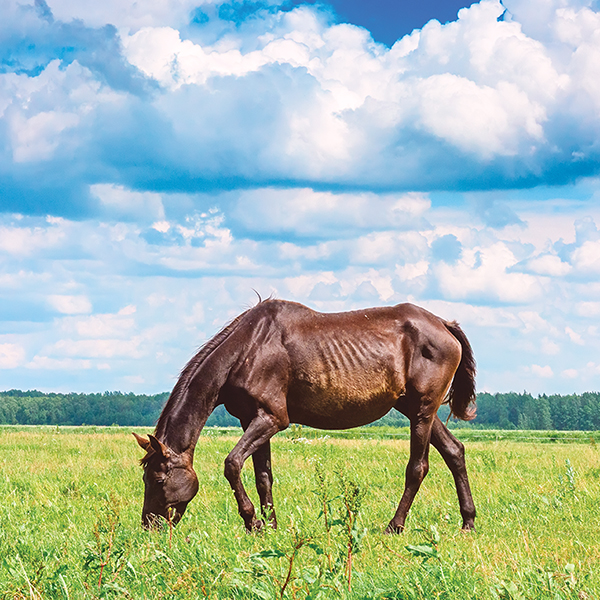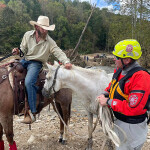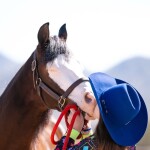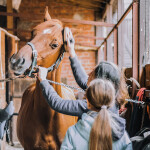A horse with extensive loss of muscle and fat, combined with a very low body condition score (BCS) constitutes an emaciated horse. These neglected and starved horses are at risk for serious health problems, including those of the digestive tract and heart. When rescued from a neglect situation, these equines must be brought back to a healthy weight.
Laura Lutz, Barn Manager at Redemption Road Horse Rescue in Jackson, Tenn., asserts it is paramount to “refeed very gradually” when caring for an underweight horse. The worst thing you can do is feed too much too quickly. Redemption Road follows a specific refeed protocol from UC-Davis. Laura says they typically start an emaciated horse on lower quality hay and gradually move up from there if the horse is not used to grain or a higher quality hay. In fact, for the first week, grain is not given at all- just so the horse can get used to hay. Since starved horses have decreased gut bacteria necessary for proper digestion, grain is introduced slowly, and the amount is bumped up after 2-3 weeks. Laura also recommends having the horse’s teeth checked and dewormed (gradually, beginning with a gentle medication) when attempting to put weight on an emaciated horse.
Most refeed protocols suggest in the immediate recovery period following a rescue of a starved, neglected horse, start with 1 lb. of mixed-grass hay every 2 hours, or pasture grazing for 30 minutes at a time with an hour break in between. If possible, leave the horse stalled at night with 4 lbs. of mixed-grass hay, plenty of water, and a salt block. This will allow you to control the horse’s intake and observe defecation as well- the simplest way to get an idea of how its gastrointestinal (GI) tract is handling the nourishment.
If you are caring for an underweight horse, shoot for a goal of your horse gaining ½ lb. per day. For example, with a BCS below 5, a horse is 45-50 lbs. below its ideal weight. Putting weight on a horse is a slow process if done safely. Aim for a ½ lb. of gain per day as a safe goal; this would equal out to 45 lbs. of gain in 90 days.
Approximately 4,500 additional calories a day should help you achieve a ½ lb. of weight gain each day. This can be done by feeding 3,000 calories of grain (about 2 lbs.) and 1,800 calories of hay (remember: start with lower quality hay and gradually move up) per day. Choose a controlled starch feed that is easily digestible. As always, make any changes gradually, so the horse’s gut isn’t upset and, therefore, increasing the risk of colic episodes. If you notice any signs of GI upset, such as manure that is too soft, too frequent, or even liquid, you may consider feeding a pre and probiotic blend, as detailed in the “Benefits of Pre and Probiotics” article.
At Redemption Road a grain with an adequate blend of fat and protein is fed to these starved horses. Older horses may receive Red Cell, a vitamin/iron/mineral supplement “to fill in any gaps,” Laura states. Coconut oil may be given for coat health, and, if needed, calorie-building supplements may be given for those horses who continue to struggle to build weight.
Once brought up to a healthy weight and rehabilitated, these rescue horses can resume a normal life and make wonderful equine partners. Before beginning any type of weight gain protocol, be sure to consult with your veterinarian.









